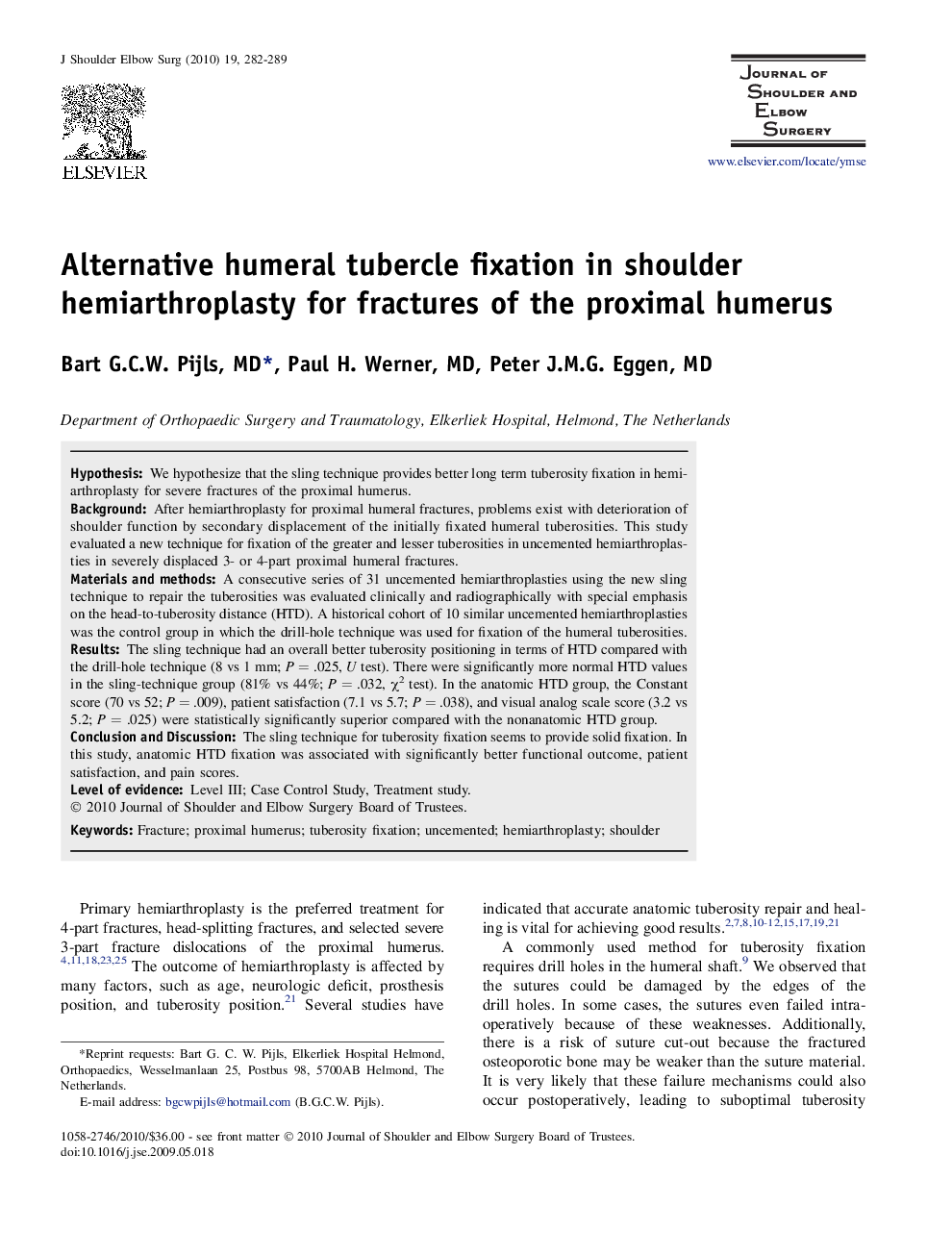| Article ID | Journal | Published Year | Pages | File Type |
|---|---|---|---|---|
| 4076086 | Journal of Shoulder and Elbow Surgery | 2010 | 8 Pages |
HypothesisWe hypothesize that the sling technique provides better long term tuberosity fixation in hemiarthroplasty for severe fractures of the proximal humerus.BackgroundAfter hemiarthroplasty for proximal humeral fractures, problems exist with deterioration of shoulder function by secondary displacement of the initially fixated humeral tuberosities. This study evaluated a new technique for fixation of the greater and lesser tuberosities in uncemented hemiarthroplasties in severely displaced 3- or 4-part proximal humeral fractures.Materials and methodsA consecutive series of 31 uncemented hemiarthroplasties using the new sling technique to repair the tuberosities was evaluated clinically and radiographically with special emphasis on the head-to-tuberosity distance (HTD). A historical cohort of 10 similar uncemented hemiarthroplasties was the control group in which the drill-hole technique was used for fixation of the humeral tuberosities.ResultsThe sling technique had an overall better tuberosity positioning in terms of HTD compared with the drill-hole technique (8 vs 1 mm; P = .025, U test). There were significantly more normal HTD values in the sling-technique group (81% vs 44%; P = .032, χ2 test). In the anatomic HTD group, the Constant score (70 vs 52; P = .009), patient satisfaction (7.1 vs 5.7; P = .038), and visual analog scale score (3.2 vs 5.2; P = .025) were statistically significantly superior compared with the nonanatomic HTD group.Conclusion and DiscussionThe sling technique for tuberosity fixation seems to provide solid fixation. In this study, anatomic HTD fixation was associated with significantly better functional outcome, patient satisfaction, and pain scores.
